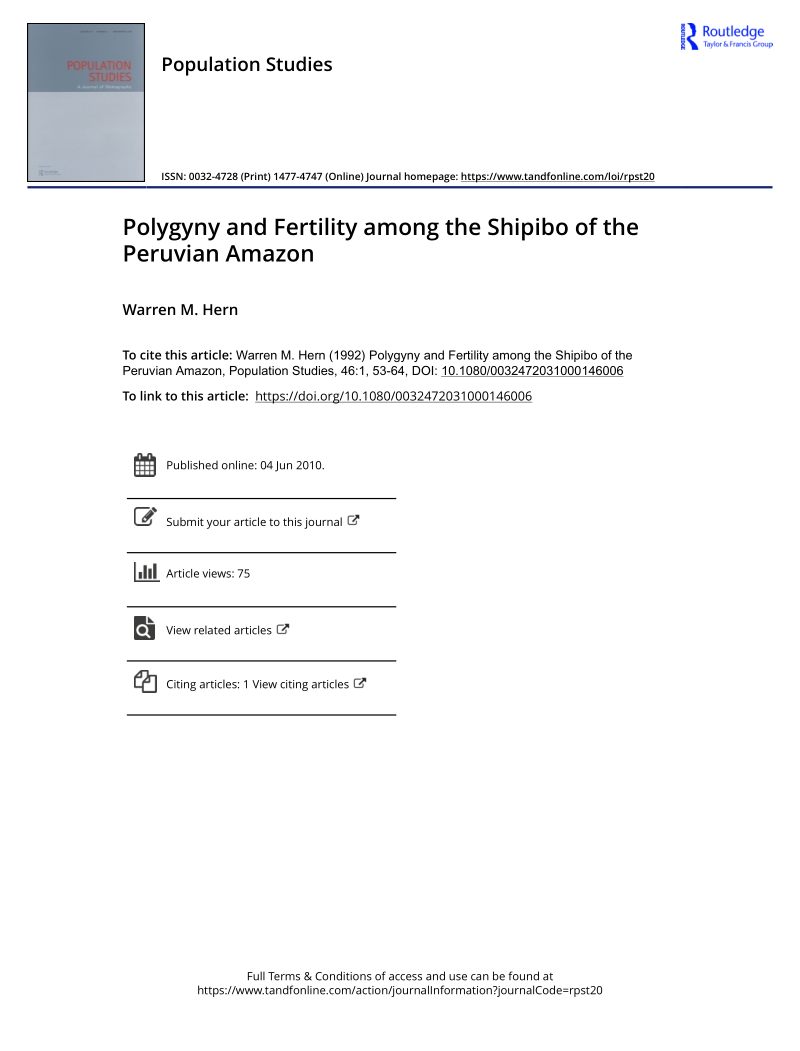Warren Hern analyzes a group (Amazonian tribesman) for which polygyny is associated with lower population growth.
- Type
- Academic / Technical Report
- Source
- Warren M. Hern Non-LDS
- Hearsay
- Secondary
- Reference
Warren M. Hern, "Polygyny and Fertility among the Shipibo of the Peruvian Amazon," Population Studies: A Journal of Demography 46, no. 1 (1992): 53-64
- Scribe/Publisher
- Population Studies: A Journal of Demography
- People
- Warren M. Hern
- Audience
- Reading Public
- Transcription
INTRODUCTION
In this report we describe the fertility of an Amazon Indian tribe with one of the highest documented fertilities of any human group, a gross reproduction of 4.933 in 1964-69. This tribe, the Shipibo, is experiencing rapid cultural change which includes a decline in the prevalence of polygyny. We shall test the specific hypothesis that polygyny limits the fertility, both of individual women and of the community, through post partum sexual abstinence and longer birth intervals. The birth intervals of polygynously married women are longer, and their fertility is lower. The community's fertility rate is negatively associated with the proportion of polygynous birth intervals.
- Citations in Mormonr Qnas
The B. H. Roberts Foundation is not owned by, operated by, or affiliated with the Church of Jesus Christ of Latter-day Saints.

